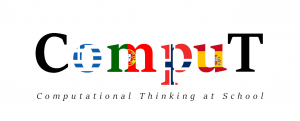Αρχική » Άρθρα με ετικέτα 'Barefoot.org' (Σελίδα 2)
Αρχείο ετικέτας Barefoot.org
Barefoot Abstraction
What is abstraction? Abstraction is about simplifying things – identifying what’s important without worrying too much about detail. A school timetable is an abstraction of what happens in a typical week. It shows key information about classes, teachers, rooms and times but ignores further layers of detail such as learning objectives and activities. A class […]
Barefoot Patterns / Generalisation
What are patterns? Patterns are everywhere. By identifying patterns, we can create rules and solve more-general problems. Children notice patterns in how teachers react to their behaviour. Weather patterns feed into our forecasts. In maths, pupils can measure the area of a rectangle drawn on graph paper, by counting the number of unit squares within it, […]
Barefoot Decomposition
What is decomposition? In computing, decomposition is the process of breaking down a task into smaller, more-manageable parts. It has many advantages. It helps us manage large projects and makes the process of solving a complex problem less daunting and much easier to take on. With decomposition, a task can be tackled by several people […]
Barefoot Algorithms
What are algorithms? An algorithm is a sequence of instructions or a set of rules to get something done. You’ll favour a particular route home from school – you can think of it as an algorithm. There are plenty of alternative routes home, and there’ll be an algorithm to describe each one of those […]
Barefoot Logic
What is logic? Logical reasoning helps us explain why something happens. If you set up two computers in the same way, giving them the same instructions (the program) and the same input, you can pretty much guarantee the same output. This is because computers don’t make things up as they go along or work differently […]
Visit the website by LTEE
Σύνδεσμος Moodle
eTwinning
Categories
Get ideas
Archive
- Σεπτέμβριος 2022
- Ιούνιος 2022
- Μάρτιος 2022
- Δεκέμβριος 2021
- Οκτώβριος 2021
- Ιούνιος 2021
- Μάιος 2021
- Απρίλιος 2021
- Μάρτιος 2021
- Φεβρουάριος 2021
- Ιανουάριος 2021
- Δεκέμβριος 2020
- Νοέμβριος 2020
- Οκτώβριος 2020
- Σεπτέμβριος 2020
- Απρίλιος 2020
- Μάρτιος 2020
- Φεβρουάριος 2020
- Ιανουάριος 2020
- Δεκέμβριος 2019
- Νοέμβριος 2019
- Οκτώβριος 2019
- Σεπτέμβριος 2019




